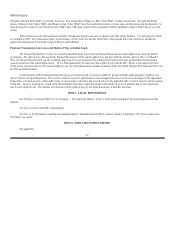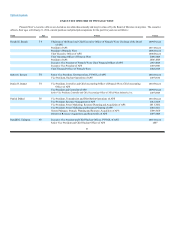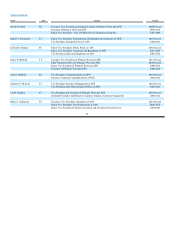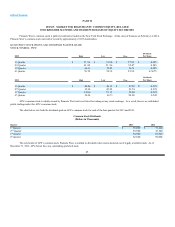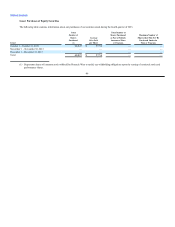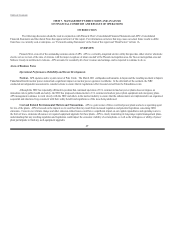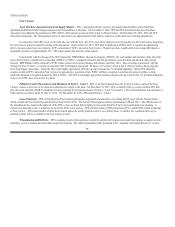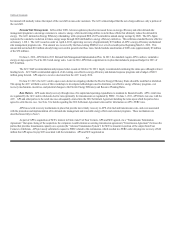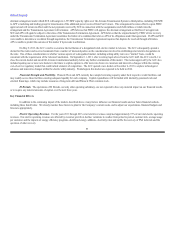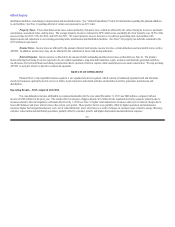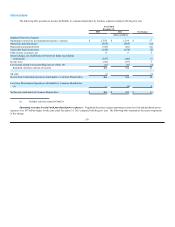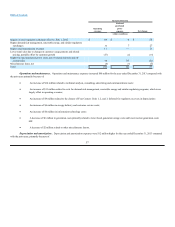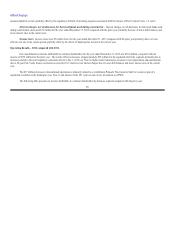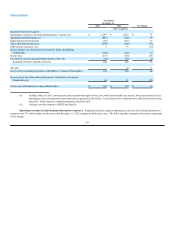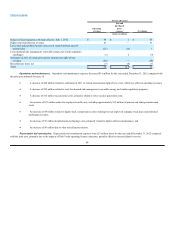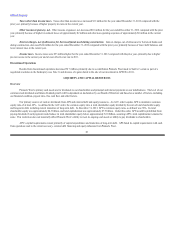APS 2013 Annual Report Download - page 55
Download and view the complete annual report
Please find page 55 of the 2013 APS annual report below. You can navigate through the pages in the report by either clicking on the pages listed below, or by using the keyword search tool below to find specific information within the annual report.
Table of Contents
but instead will modestly reduce the impact of the cost shift on non-solar customers. The ACC acknowledged that the new charge addresses only a portion of
the cost shift.
Demand Side Management. In December 2009, Arizona regulators placed an increased focus on energy efficiency and other demand side
management programs to encourage customers to conserve energy, while incentivizing utilities to aid in these efforts that ultimately reduce the demand for
energy. The ACC initiated an Energy Efficiency rulemaking, with a proposed EES of 22% cumulative annual energy savings by 2020. The 22% figure
represents the cumulative reduction in future energy usage through 2020 attributable to energy efficiency initiatives. This ambitious standard became effective
on January 1, 2011. The ACC issued an order on April 4, 2012, approving recovery of approximately $72 million of APS’s energy efficiency and demand
side management program costs. This amount was recovered by the then-existing DSMAC over a twelve-month period beginning March 1, 2012. This
amount did not include $10 million already being recovered in general retail base rates, but did include amortization of 2009 costs (approximately $5 million
of the $72 million).
On June 1, 2012, APS filed its 2013 Demand Side Management Implementation Plan. In 2013, the standards require APS to achieve cumulative
energy savings equal to 5% of its 2012 retail energy sales. Later in 2012, APS filed a supplement to its plan that included a proposed budget for 2013 of
$87.6 million.
The ACC Staff recommendation and proposed order, issued on October 30, 2013, largely recommended continuing the status quo, although at lower
funding levels. ACC Staff recommended approval of all existing cost-effective energy efficiency and demand response programs and a budget of $68.9
million going forward. APS expects to receive a decision from the ACC in early 2014.
On June 27, 2013, the ACC voted to open a new docket investigating whether the Electric Energy Efficiency Rules should be modified or abolished.
This spring the ACC will hold a series of three workshops to investigate methodologies used to determine cost effective energy efficiency programs, cost
recovery mechanisms, incentives, and potential changes to the Electric Energy Efficiency and Resource Planning Rules.
Rate Matters. APS needs timely recovery through rates of its capital and operating expenditures to maintain its financial health. APS’s retail rates
are regulated by the ACC and its wholesale electric rates (primarily for transmission) are regulated by FERC. On June 1, 2011, APS filed a rate case with the
ACC. APS and other parties to the retail rate case subsequently entered into the 2012 Settlement Agreement detailing the terms upon which the parties have
agreed to settle the rate case. See Note 3 for details regarding the 2012 Settlement Agreement terms and for information on APS’s FERC rates.
APS has several recovery mechanisms in place that provide more timely recovery to APS of its fuel and transmission costs, and costs associated
with the promotion and implementation of its demand side management and renewable energy efforts and customer programs. These mechanisms are
described more fully in Note 3.
As part of APS’s acquisition of SCE’s interest in Units 4 and 5 of Four Corners, APS and SCE agreed, via a “Transmission Termination
Agreement,” that upon closing of the acquisition, the companies would terminate an existing transmission agreement (“Transmission Agreement”) between the
parties that provides transmission capacity on a system (the “Arizona Transmission System”) for SCE to transmit its portion of the output from Four
Corners to California. APS previously submitted a request to FERC related to this termination, which resulted in a FERC order denying rate recovery of $40
million that APS agreed to pay SCE associated with the termination. APS and SCE negotiated an
52


